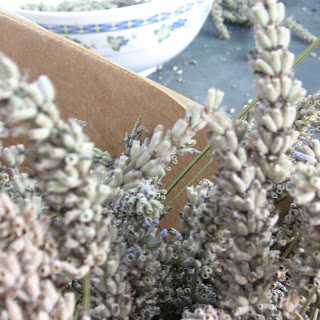Here at Slow days HQ we like to find ways of reusing, recycling and generally consuming less. Cork must be one of the most versatile natural substances: a natural insulator, compressible, light. From woodwind instruments to cricket balls, bricks to innersoles to bathroom tiles, cork has found uses throughout the home. Lets hear it for the humble cork!
Monday, February 6, 2012
Thursday, January 5, 2012
La Befana vien di notte...
La Befana vien di notte
con le scarpe tutte rotte
con le toppe alla sottana
Viva, Viva La Befana!
Secondo la tradizione italiana la Befana, raffigurata come una vecchia brutta e malvestita che vola su una scopa, fa visita ai bambini ( e non solo) nella notte tra il 5 e il 6 gennaio (la notte dell'epifania) per riempire le calze lasciate da essi appositamente appese sul camino o vicino a una finestra. Ai bambini che sono stati buoni durante l'anno, la Befana porterà caramelle e cioccolatini, mandarini, noci, frutta secca e piccoli regali, chi invece è stato cattivo avrà solo del carbone, oggi si usa un preparato in zucchero colorato di nero a forma di carbone, molto duro da masticare.
In molte case, per attirare benevolmente la befana, è tradizione lasciare un piattino con qualcosa da mangiare: generalmente si tratta di un mandarino, un'acciuga, un pezzo di aringa affumicata, e naturalmente un bicchiere di vino rosso!
According to the Italian Twelth Night tradition, the Befana, an old witch, visits small children by broomstick on the night between 5 and January 6 (Epiphany night) to fill the socks left by the fireplace or a window. To the children who have been good during the year, the Befana brings sweets and chocolates, tangerines, nuts, dried fruit and small gifts, but those who have been bad only coal. Today they receive lumps of blackened sugar- very hard to chew!
It is traditional in many homes to leave a plate with something to eat in order to attract the Befana : by custom a tangerine, an anchovy or a piece of smoked herring... and of course a glass of red wine!
La Befana vien di notte
con le scarpe tutte rotte
attraversa tutti i tetti
porta bambole e confetti
con le scarpe tutte rotte
attraversa tutti i tetti
porta bambole e confetti
Tuesday, January 3, 2012
Vin Santo - A Tuscan Classic
Vin Santo is one of Tuscany's treasures. This sweet golden wine has a characteristic caramel-nutty flavour which comes from the slow ageing of the wine in oak, chestnut or cherry-wood barrels. The wine making process is labour intensive and quite unlike that of a regular chianti wine.
The grapes used to make Vin Santo vary depending on the region. In Tuscany Trebbiano, Malvasia and San Columbano/Canaiolo are traditionally used. Once harvested they are hung for 3-6 months in a well ventilated room until the grapes have lost about half their volume or weight and are well on the way to becoming raisins. This stage is perilous for the grapes as there is risk of insect damage or mold if the air becomes too damp. These days most vineyards give nature a helping hand by putting an electric fan and dehumidifier in the room. Even so, many grapes are lost at this stage and have to be discarded. This is done by hand, one grape at a time.
These semi-dried grapes are then pressed to release their concentrated sugars and flavours which form the basis of the wine. Three years sealed in barrels exposed to ambient temperatures results in a strong sweet wine with a high alcohol content of 16-18 percent. Often served at the end of a meal with the dry 'biscotti' it has become the classic Tuscan way of finishing a meal or even the perfect end to a slow day in Tuscany.
Wednesday, November 30, 2011
Wednesday, November 16, 2011
Olio Nuovo - This years Olive Oil
 |
| The labour intensive Olive harvest |
 |
| Olive harvesting Italian style |
 |
| Ripe and immature Olives together |
In Tuscany the Olive are usually harvested in the first two weeks of November, and thus the freshly pressed Olive oil is available - Olio Nuovo. The olives are pressed before they have reached the full maturation giving the Oil a dark greenish colour and slight grassy flavour.
Friday, November 11, 2011
L'estate di San Martino -an Indian summer in Tuscany
 |
| Fall in Tuscany |
Questi ultimi giorni sono stati degni della così detta “estate di San Martino”, definizione legata alla leggenda del santo che divise in due un mantello per coprire un povero mendicante nudo e freddoloso. Il Signore «ricompensò» il santo inviando un clima mite e temperato quando ormai si andava verso il freddo dell'inverno.
 |
| Saint Martin dividing his cloak - Martini Simone |
In Italia, per tradizione, il giorno di San Martino si aprono le botti per il primo assaggio del vino novello, accompagnato dalle prime castagne (da qui il motto «a San Martino ogni mosto diventa vino). Questa tradizione viene celebrata anche in una famosa poesia di Giosuè Carducci, intitolata appunto «San Martino».
Tuesday, November 8, 2011
Frittelle di castagne - Chestnut Fritters -Easy!
Chestnut flour, water or milk, olive oil, pine nuts, raisins.
Prepare a mixture with 250 g. flour, water or milk and 1 tablespoon of olive oil and work it into a dough.
Add pine nuts and raisins. Pour 1 tablespoon of dough in a pan with hot oil and fry it till it becomes golden.
After frying all the dough sprinkle with sugar.
Labels:
autumn recipes,
Chestnut fritters,
chestnut recipe
Subscribe to:
Posts (Atom)














